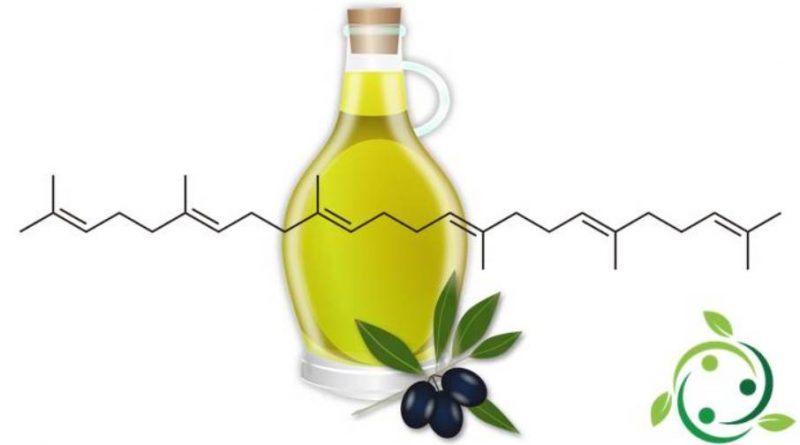Squalene
Squalene
The squalene, whose term in the official IUPAC nomenclature is. 2,6,10,15,19,23-hexamethyl-2,6,10,14,18,22-tetracosesaene.
Squalene, also known by the names spinacene or supraene, is a hydrocarbon and a triterpene with a brute or molecular formula: C30H50.
It is an organic substance widely diffused in nature. Particularly abundant in shark liver, from which it takes its name, it is an intermediate compound in the biosynthesis of sterols, very important substances in the physiology of animals and plants.
In the vegetable world, squalene is present in abundant quantities in olive oil, peanut oil, rice bran, amaranth seeds and wheat germ.
In olive oil, depending on the variety and extraction method, we find 200 to 12000 mg per kg.
On a human level, squalene is one of the most important constituents of sebum, an oily substance that keeps the most superficial layer of the epidermis hydrated by slowing down the evaporation of the water. The sebum also protects the skin from various substances such as: detergents, chemicals, microorganisms, solar radiation, etc.
Some research also attributes to squalene a protective action against skin cancer, thanks to its ability to fight free radicals and absorb harmful solar radiation.
However, humans are capable of producing squalene.
This is produced from vinegar-CoA derived from the metabolism of the various nutrients (carbohydrates, proteins and in particular fats) and is quickly converted into cholesterol. At the level of the sebaceous glands, however, there is a lack of the enzymes necessary to carry out this conversion and it is for this reason that squalene is particularly abundant in the sebum.
Thanks to its chemical nature, squalene is less dense than water, which is why it contributes to supporting the considerable mass of sharks, contributing to the excellent hydrostatic thrust of this animal species.
Squalene is the biochemical precursor of steroids and triterpenes and is generally used as an adjuvant in vaccines.
Based on the data available and related to the administration of 22 million doses of flu vaccine containing squalene and from studies relating to the administration in infants and children, the use of squalene as an adjuvant is considered safe for health.
The squalene is however used in various fields, from the medical-pharmaceutical one, up to the cosmetic field.
As for contraindications, normally squalene used in cosmetics (therefore used topically) is well tolerated and does not cause side effects. However, in some cases, it has been shown to have comedogenic activity, therefore, its use in people with impure, combination or oily skin should be carried out with caution, preferably under medical supervision.
Furthermore, as with any other substance, squalene can also trigger allergic reactions in sensitive individuals.
Warning: The information shown is not medical advice and may not be accurate. The contents are for illustrative purposes only and do not replace medical advice.

